
The minute is a unit of time defined as equal to 60 seconds. One hour contains 60 minutes. Although not a unit in the International System of Units (SI), the minute is accepted for use in the SI. The SI symbol for minutes is min. The prime symbol ′ is also sometimes used informally to denote minutes. In the UTC time standard, a minute on rare occasions has 61 seconds, a consequence of leap seconds; there is also a provision to insert a negative leap second, which would result in a 59-second minute, but this has never happened in more than 40 years under this system.

The Japanese beetle is a species of scarab beetle. The adult measures 15 mm (0.6 in) in length and 10 mm (0.4 in) in width, has iridescent copper-colored elytra, and a green thorax and head. Due to natural predators, the Japanese beetle is not considered a pest in Japan, but in North America and some regions of Europe, it is a noted pest to roughly 300 species of plants. Some of these plants include rose bushes, grapes, hops, canna, crape myrtles, birch trees, linden trees, and others.

The little stint is a very small wader. It breeds in arctic Europe and Asia, and is a long-distance migrant, wintering south to Africa and south Asia. It occasionally is a vagrant to North America and to Australia. The genus name is from Ancient Greek kalidris or skalidris, a term used by Aristotle for some grey-coloured waterside birds. The specific minuta is Latin for "small.
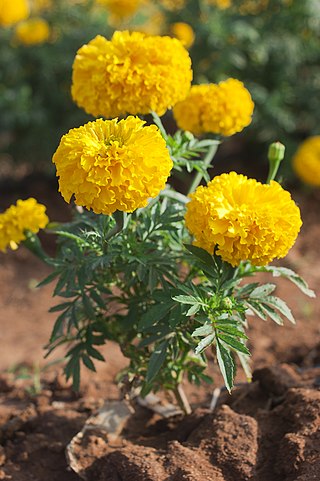
Tagetes is a genus of 50 species of annual or perennial, mostly herbaceous plants in the family Asteraceae. They are among several groups of plants known in English as marigolds. The genus Tagetes was described by Carl Linnaeus in 1753.

The common iora is a small passerine bird found across the tropical Indian subcontinent and Southeast Asia, with populations showing plumage variations, some of which are designated as subspecies. A species found in scrub and forest, it is easily detected from its loud whistles and the bright colours. During the breeding season, males display by fluffing up their feathers and spiral in the air appearing like a green, black, yellow, and white ball.

The Tiphiidae are a family of large, solitary wasps whose larvae are parasitoids of various beetle larvae, especially those in the superfamily Scarabaeoidea. Until recently, this family contained several additional subfamilies, but multiple studies have independently confirmed that these comprise a separate lineage, and are now classified in the family Thynnidae.

Marshall's iora, also known as the white-tailed iora, is a songbird in the genus Aegithina found in parts of India and Sri Lanka.
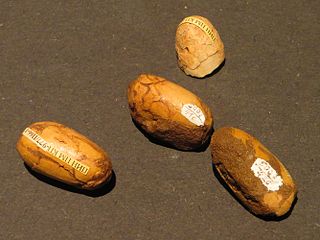
Gobipteryx is a genus of prehistoric bird from the Campanian Age of the Late Cretaceous Period. It is not known to have any direct descendants. Like the rest of the enantiornithes clade, Gobipteryx is thought to have gone extinct near the end of the Cretaceous.

Marchena is a genus of jumping spiders only found in the United States. Its only described species, M. minuta, dwells on the barks of conifers along the west coast, especially California, Washington and Nevada.
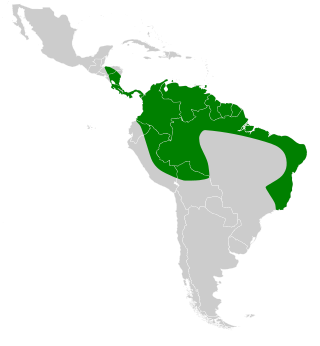
The white-bellied big-eared bat is a bat species from South and Central America, as well as Trinidad and Tobago in the Caribbean.
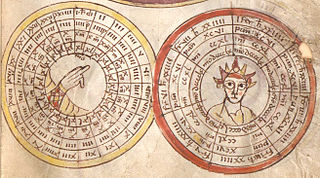
A moment is a medieval unit of time. The movement of a shadow on a sundial covered 40 moments in a solar hour, a twelfth of the period between sunrise and sunset. The length of a solar hour depended on the length of the day, which, in turn, varied with the season. Although the length of a moment in modern seconds was therefore not fixed, on average, a medieval moment corresponded to 90 seconds. A solar day can be divided into 24 hours of either equal or unequal lengths, the former being called natural or equinoctial, and the latter artificial. The hour was divided into four puncta (quarter-hours), 10 minuta, or 40 momenta.

Tagetes minuta is a tall upright marigold plant from the genus Tagetes, with small flowers, native to the southern half of South America. Since Spanish colonization, it has been introduced around the world, and has become naturalized in Europe, Asia, Australasia, North America, and Africa. Tagetes minuta has numerous local names that vary by region. In the Andes it is known as Huacatay or Wacatay, and in other regions it is common as chinchilla, chiquilla, chilca, zuico, suico, or anisillo. Other names include muster John Henry, southern marigold, khakibos, stinking roger, wild marigold, and black mint. It is called by the Quechua terms huacatay in Peru or wakataya in Bolivia.

Tiphia femorata, often known as a beetle-killing wasp or common tiphiid wasp, is a species of wasp belonging to the family Tiphiidae, subfamily Tiphiinae.
Hemiconcavodonta is an extinct genus of bivalve in the extinct family Praenuculidae. The genus is one of three genera in the subfamily Concavodontinae. Hemiconcavodonta is known solely from late Ordovician, Caradoc epoch, fossils found in South America. The genus currently contains a single accepted species, Hemiconcavodonta minuta.

Tiphiinae is one of the two subfamilies of the flower wasp family Tiphiidae, the other being the Nearctic Brachycistidinae. It is the larger of the two and has a worldwide distribution.
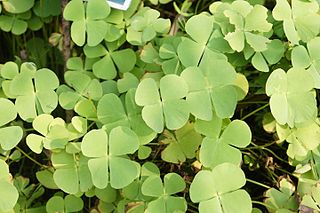
Marsilea minuta, or dwarf waterclover is a species of aquatic fern in the family Marsileaceae. It is not to be confused with Marsilea minutaE.Fourn. 1880, which is a synonym for Marsilea vestita. Other common names include gelid waterklawer, small water clover, airy pepperwort, and pepperwort, though the lattermost also applies to plants in the genus Lepidium. In French it is called marsilea à quatre feuilles and petite marsilée, the latter appearing to be a calque with the Latin botanical name. In Chinese it is 南国田字草, literally "southern field word grass," referencing the similarity of the leaflet shape to the Chinese character for "field." The Koch Rajbongshi people and Garo people call it shusni shak. It is called 'শুশনি শাক' in Bengali. In parts of India it can be called sunisanakka In Indonesian it is semanggi, but this name also applies to Marsilea crenata. In Japanese it is nangokudenjiso and in Thai it is phakwaen. In Malaysian it is tapak itik. In the Philippines it is kaya-kayapuan.

Punta Minuta is a 2,556 metres (8,386 ft) mountain in the department of Haute-Corse on the island of Corsica, France. It is in the Monte Cinto massif.
Tiphia davidrajui is a species of wasp belonging to the family Tiphiidae, subfamily Tiphiinae. The species is named after a naturalist from Kerala Mr. David V. Raju.
Tiphia bijui is a species of wasp belonging to the family Tiphiidae, subfamily Tiphiinae. The species is named after an expert field assistant Mr. T. Biju, a Forest watcher at Aralam Wildlife Sanctuary.
Tiphia chareshi is a species of wasp belonging to the family Tiphiidae, subfamily Tiphiinae. The species is named after Mr.C.Charesh.














